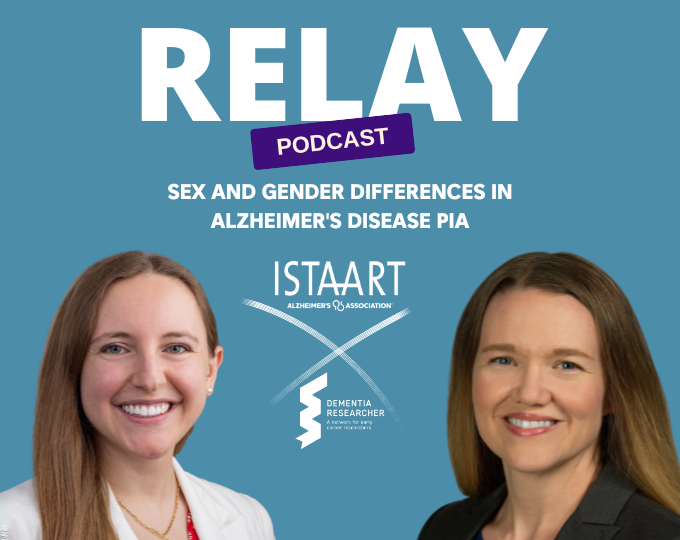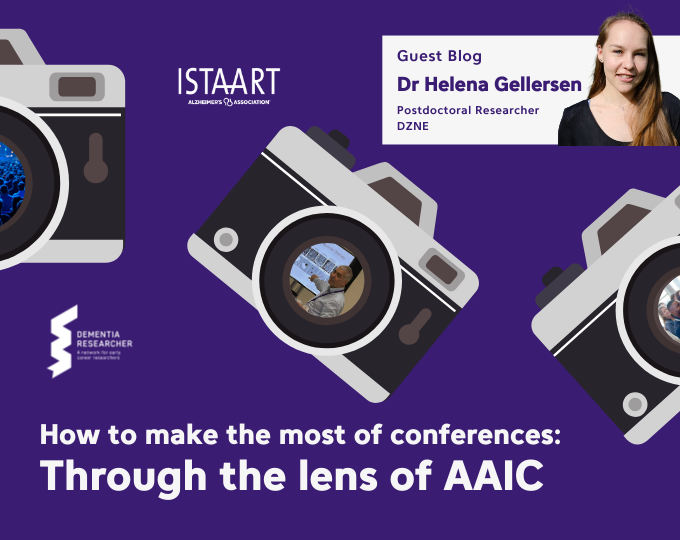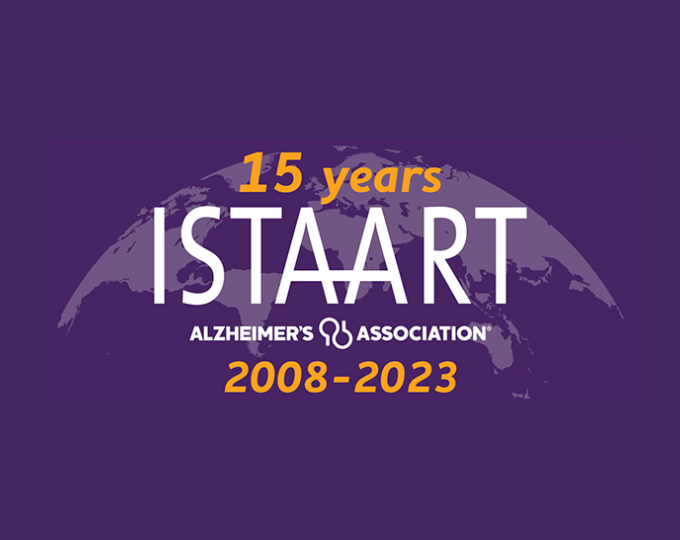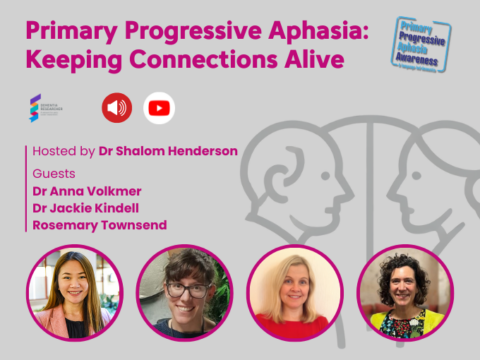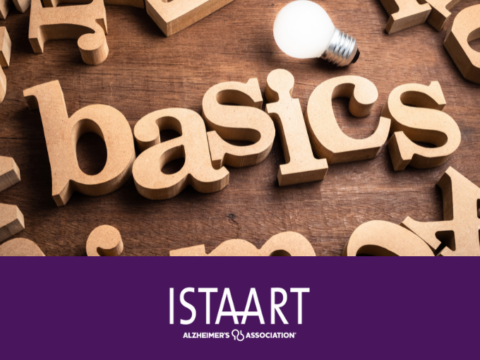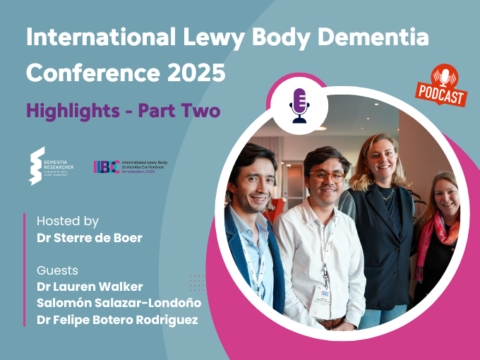Welcome to the fifth season of the ISTAART PIA Relay Podcast, brought to you by Dementia Researcher. This series features members of ISTAART, engaging in insightful interviews about groundbreaking dementia research, and the work of the ISTAART Professional Interest Areas (PIA) they represent. As we build up to the Alzheimer’s Association International Conference in Philadelphia, join us for daily episodes that showcase the remarkable work being done in various research fields.
In this episode, Professor Arlene Astell interviews Caitlyn Fastenau, a PhD candidate in Integrated Biomedical Sciences focusing on the Biology of Ageing. Caitlyn shares her journey into dementia research, driven by personal experiences and a passion for understanding neurodegenerative diseases. Her research explores the role of immune cells, particularly microglia, in Alzheimer’s disease, using advanced techniques like single-cell RNA sequencing.
Caitlyn discusses the her work, the importance of diversity in research, highlighting efforts to include underrepresented communities in dementia studies. She also talks about the significance of translational research and the potential non-pharmacological interventions that could reduce the risk of neurodegenerative diseases.
Tune in to learn more about the Immunity and Neurodegeneration PIA, what they have planned for AAIC and the latest hot topics in the field, and the collaborative environment that ISTAART provides for researchers at all levels.
PS. Don't miss Caitlyn's presentation at the AAIC and her insights on leveraging student engagement in scientific societies.
Voice Over:
Hello, and thank you for listening to the fifth season of the ISTAART PIA Relay Podcast brought to you by Dementia Researcher. ISTAART is a professional society and part of the Alzheimer's Association representing scientists, physicians; and other dementia professionals active in researching and understanding the causes and treatments of Alzheimer's disease and other dementias. In this six-part series, we have members of ISTAART professional interest areas taking turns at interviewing their colleagues and being interviewed themselves with the interviewee going on to be the next episodes' interviewer. We're sure you've listened before, so you know what to expect. We'll be releasing one of these podcasts each day in the buildup to the Alzheimer's Association International Conference, which this year takes place in Philadelphia. Through the series, we hope you'll learn more about some of the amazing research happening in different fields of discovery and about the great work taking place in the ISTAART PIAs. Thank you for listening.
Professor Arlene Astell:
I'm Arlene Astell. I'm a professor of cyber psychology at Northumbria University in the UK. And I'm also a Director of the Dementia Ageing Technology Engagement Lab or the DATE Lab at the University of Toronto in Canada. I'm currently Chair of the Non-Pharmacological Interventions PIA. And today I am delighted to be talking with Caitlyn Fastenau and let's see what she has to tell us.
Caitlyn Fastenau:
Thank you for having me. I'm really excited to have this conversation to talk about the intersection of different PIAs and the activities that we're doing. A little bit about myself, I'm Caitlyn Fastenau. I am entering my fifth year of my PhD in Integrated Biomedical Sciences with a focus on Biology of Ageing. And my research focus is based on neuroscience, and I approach that from a translational perspective, which I really have enjoyed.
I work in mouse model systems as well as cell culture, primarily looking at the innate immune cell in the brain, microglia, and that links really nicely to my work on the Immunity and Neurodegeneration PIA. And then the flip side of my research along that translational perspective is that I work in understanding mechanisms of Alzheimer's and other neurodegenerative diseases in postmortem human disease tissue essentially. So, I work at our university's Alzheimer's Disease Research Centre or an ADRC, and we have a brain bank, and my faculty advisor is the co-director of that brain bank. So, my thesis research has benefited immensely from being able to have access to cases and to probe various proteins as well as modifications that I'm particularly interested; having to do with innate immune activation in Alzheimer's disease.
Professor Arlene Astell:
Great. Well, there's a lot to unpack there, which hope we will have time to go into, but I just wonder if we can step back a bit and if you can tell us what brought you into dementia research?
Caitlyn Fastenau:
That's a fantastic question. So really my journey in understanding the mechanisms of ageing started when I was a child. We lived in a multi-generational family, in one home. And so, I was raised very closely with my grandparents who obviously were ageing as I was ageing as a young child, and I was uniquely aware of the physical as well as the cognitive side effects of ageing. While they didn't have dementia, thank gosh, I did see family members getting diagnosed with Alzheimer's disease and other neurodegenerative disorders. And I was always a question asker, I've always been very inquisitive as a child. So, I thought, okay, I'm going to approach biology, biology of disease when I went to college. And then I had an amazing opportunity to get onto a training grant called the Advancing Diversity of Ageing Research, it's an NIA funded grant. And I went to UC Davis, and I did that, and honestly opened my eyes to dementia and the immense gaps in knowledge.
So, then I pursued my graduate degree in it. And honestly, I love Alzheimer's disease. It sounds weird to say that. I don't love dementia because we should have a world without dementia, I agree. But I really enjoy the field of Alzheimer's researchers. Not that I've had many fields, but I feel it's very collaborative, it's very inclusive. I think it's also very respectful of different opinions in terms of scientist’s perspectives and approaches to trying to answer questions and a lot of convergence as well, which I appreciate. And as a trainee, I think I've had an opportunity to get involved in ways I wouldn't have otherwise been able to get involved and take on some student leadership positions, which has been really unique. So, I think allows students to take a little initiative in their own training journey as well as that awesome kind of collaborative opportunities.
Professor Arlene Astell:
Oh, that's great. And it sounds as if you have to turn that childhood interest and observation of your own family into something that's become a real passion, which is really important for a researcher. I think you have to be really excited about your research and then you bring other people along with you. And we can hear in your voice that you are very excited about this, which is wonderful. And I think that's also important; you mentioned that you're focused on translation. And I wondered if you could just tell us a bit more about that, because often it's seen as a separation from the sort of hard science, the bench science and the science with the people who, you know. And I wonder how you approach that translation?
Caitlyn Fastenau:
I think that's the age-old question. As a trained Biomedical Basic Scientist, I think that's definitely a hurdle that we have to overcome in terms of advocating that our intriguing findings in a cell culture model or in a mouse model is efficacious to investigate non-invasively in human systems. But interestingly, I actually started in humans in preclinical testing in older adults that have MCI. So, I actually worked in neuropsychological cognitive testing in my undergrad for three years, and I enjoyed that immensely. I'm a certified yapper, I love to talk. So, I enjoyed building connections and fostering community in terms of understanding what different populations in a local area were the resources and resources to medical care and dementia care and memory centres. And then how can we screen those at a, I guess, unified realm in terms of we were taking into account the impact of bilingualism specifically as a cognitive scaffold to reduce your symptoms of mild cognitive impairment essentially.
So, I started there, and I said, wow, I love working with preclinical patients or enrolling patients in clinical trials; because I was often asked, "Okay, what's the biology behind this?" And I wanted to really understand the biology because if you're knowledgeable about what's happening, at least from what we can understand in the brain and in the body; I think you can provide that insight to patients or the community to build a better understanding of what we know and then what we need in our community participants to bridge those gaps. And then in my current research as a graduate student, I haven't had the opportunity to work immensely with patients, but I work in an ADRC that obviously sees patients. So, I have a lot of medical and personal background in my cases, so I'm able to create correlations on cardiovascular disease and brain neuropathology, which is a really cool way.
And then we take those findings and then we go to the community in public events, and we say, "Hey, hypertension, it's a really big issue. Managing your hypertension and increasing your physical activity is good for your brain, and these are the data that support that." But I will also plug translatability and working with community participants. A huge component of that is also understanding the local population in our area and creating a diverse group of patients and population participants that represent that area. So, I'm currently based in South Texas, in San Antonio, here in the United States, and where our demographics of the city are 65% Hispanic and Latino.
So, we really try to build that connection with our community and build trust that they will come to us and say, "Hey, Hispanic individuals have a two and a half times more likelihood of developing Alzheimer's. How can we address this? How can we understand the social, the political, the demographic influences that lead to these obviously kind of differences in diagnostic rates?" So, I think particularly that is my passion, is I want to understand how people from different backgrounds and different walks of life are obtaining equitable access to research, to medication, to clinical trial; but also, how we can provide information back to the communities, kind of like a two-way street. I think translatability from a big picture is really that.
Professor Arlene Astell:
Absolutely. And I think that awareness of not just the need to reach more diverse populations, but the fact that different populations have different risk factors, which they may have been unaware of is such an important step that we've been taking in the past few years. But it is quite recent. And in fact, it was the PIAs and the lead of one of the PIAs back in 2018 who really pioneered the working paper, which has been very impactful. I guess you're familiar with it. But it was really saying, look, we can't just carry on because we know there are these differences between groups, and we should combine our strengths to raise this awareness. And I think that's been a real turning point in the past five years. And it's great to hear that you're on the front line of that in some ways.
Caitlyn Fastenau:
Yeah, absolutely. I think that echoes the same sentiment; if we discover something in a mouse, but it's not happening in a human, it's not that important. And the same concept happens if we discover things happening in only predominantly non-Hispanic white populations, how can we say this is happening truly in other populations? So, I agree. Absolutely.
Professor Arlene Astell:
And I guess the other side of that is the risk reduction efforts, which again, are also really elevated in the past 10 years or so; and targeting those more precisely to different populations who have those different risk factors.
Caitlyn Fastenau:
Yes, absolutely.
Professor Arlene Astell:
It's also such an important part of the effort, right?
Caitlyn Fastenau:
Yeah, absolutely. I think I recently heard about a really interesting effort in risk reduction, specifically out of my alma mater UC Davis. The ADRC there, they have a really large Asian American population, so they helped create a community-based exercise programme that harnessed different Southeast Asian physical activity practises. So, they had this whole rotational programme with instructors to bring to the community that was culturally relevant and important. So, I think that is a key feature to building those trusts.
Professor Arlene Astell:
Absolutely. And so, your involvement with ISTAART is through the Immunity and Neurodegeneration PIA?
Caitlyn Fastenau:
It is, yeah.
Professor Arlene Astell:
Well, how long have you been a member of that?
Caitlyn Fastenau:
So, I started as a student representative in 2022, and then I just got re-elected to do the next two years until 2026 starting after AIC this year.
Professor Arlene Astell:
Right. And so, for the listeners, can you tell us a little bit about the focus of that PIA?
Caitlyn Fastenau:
Yeah, absolutely. So, our PIA is really aimed to talk about the different immune cells in the body, both centrally and peripherally. And I focus on the central nervous system, but I think we do an excellent job of bringing both peripheral and central nervous system. And we know based on recent research that the cross-section and the interactivity of those cells in the spinal cord at the blood-brain barrier and at the surface of the brain are super important in risk and resilience to Alzheimer's and infection in general. So, our goal is to harness the expertise of our PIA members and our executive committee who are experts in the field of immune cells in neurodegeneration and look at it from a variety of perspectives. We have exercise biologists, we have circadian rhythm specialists, we have degenerative disease pathologists that focus on the tail end of disease. We have immune activation.
And really our goal, I think, is to build a really inclusive environment to foster conversations, easy flow of ideas and activities. And then we have a very active roadmap working group, which is the... I'm not sure if all the PIAs have it, I'm not as familiar with the whole hierarchical structure. But we have a very active roadmap working group, which is basically a group of people that are in our PIA, that are interested in consolidating information and writing review articles or articles that help maybe on a particular technique; what we should be thinking about when we're looking at microscopy images or something like that. And then publishing those so that everybody can have access to those recommendations or those review articles.
And I wrote a note. So, our working group has published five papers on some really interesting topics, including reactive astrocytes, knowledge gaps in Alzheimer's disease and immune biomarkers, central and peripheral immune system crosstalk, the impact of COVID-19 on the onset and progression of AD; that one is a really good paper. And the diversity of transcriptomic microglial phenotypes in ageing and Alzheimer's disease. So, from the name of those, you can hear that there's a vast variety in the things that we do; but I think that's the really awesome part of our PIA is that we do have such a diversity in expertise that the conversations I feel are very productive because we can provide insight on one problem from a variety of different aspects, which I've really enjoyed.
Professor Arlene Astell:
It sounds as if you're able to combine multiple different perspectives at different levels of investigation really, and that seems to be symbolising a lot of the way research in this field is moving forward. It's breaking down the silos and bringing together those different research, and it's really fascinating to hear how you're doing that with the immunity cells. So, what are some of the hot topics? You just told us some of the publications. So, what are some of the real hot, exciting topics at the moment that we might expect to see at AAIC for example?
Caitlyn Fastenau:
I'm actually going to refer back to our year in review webinar. So, the PIAs all have the option to host a year in review webinar in January, which essentially one of our members gets to talk about really cool research that's happened in the last year and things that we're looking forward to. So, our communications chair, Dr. Wade Self, did an excellent job in January talking about some really hot topics. So, I'm going to refer back to those; and I can definitely speak on this one. I think the epidemiological in genetic links between immune reactivity and Alzheimer's disease pathogenesis is a very hot topic, which I've also been interested in, my research. Genetic variants, absolutely. And factors outside just the brain that modify multifaceted microglial activation. So peripheral genetic factors that influence central nervous reactivity, which is very intriguing. Innate and adaptive immune mechanisms that drive neurodegeneration and how immunity influences the outcome of antiamyloid therapeutics.
So, there have been a lot of publications recently on how our innate and peripheral immune system react to antiamyloid therapies, and then generally how can we improve neuroimmune biomarkers. That's a really difficult one because immune cells are circulatory cells in the periphery. So being able to adequately, I don't know, surveil the immune cells in the blood and relate that directly to Alzheimer's disease, that's a really difficult topic. And we know accessing circulating cells in the brain often is like a spinal tap, which is fairly invasive and not really a great way to just see what the inflammatory profile might be. So, improving mechanisms of doing that.
Professor Arlene Astell:
Right. So, there's quite a lot going on in this topic because in a way it's one of the aspects that's been perhaps going on the longest; if we think back to the Alzheimer's original case presentation, and I recall you said earlier on about your work is also interested in postmortem brain tissue examination, which is slightly different to what you were just describing. But I'm wondering then even that people have been doing that for more than a 100 years, what sort of questions are you asking when you're doing that aspect of your own research?
Caitlyn Fastenau:
My area of expertise. So, I think specifically looking at immune in postmortem human cell and postmortem human AD tissue; specifically, I think a hot area that I'm also working on is specifically characterising cell populations with a regionality specificity. So that basically means what types of microglia, what cell surface proteins and receptors are they expressing close and distal to different pathologies? And that, in my opinion, is a key distinguish between just basic kind of postmortem diagnostic criteria of yes, it's Alzheimer’s, there's amyloid and there's tau and it's throughout the brain. Awesome. But that is just one tiny feature, it's a pathological diagnostic criteria. But the neuroimmune cells, the astrocytes, the microglia, the oligodendrocytes, what are they doing, what distribution and what surface markers are they expressing? And in my research, I'm really interested in specifically post-translational modification of microglia. So, microglia have dynamic activation states, so they should shift between homeostatic, resting, just surveilling the brain, eating up dead things, debris, things like that.
But in Alzheimer's disease, they have this kind of shift into activated state or reactive, and then they're unable to resolve that; and therefore they will be more neuroinflammatory, have more expression and release of cytokines and chemokines and create that kind of local neuroinflammatory environment, which we know that's awesome; but what are the receptors and modifications on their cells that specifically cause that lack of resolution of reactivity states? And my research has focused on that, and it's been really cool. I found it first in mice, this really interesting post-translational modification. And we said, okay, it's awesome in mice. Is it happening in humans? Oh, it's happening in humans. It's happening in a very interesting regionality proximity to amyloid beta plaques. Okay, what does that mean? So, we've dug deeper into understanding it, and now we're working on amyloid-laden vessels. So, I'm looking at cerebral amyloid angiopathy and how microglia react to that. So, it's been really fun.
Professor Arlene Astell:
So, are there any particular recent, I don't know about breakthroughs, but availability of tools and technologies that have made this type of investigation possible? And what sort of things are you using?
Caitlyn Fastenau:
Yes, absolutely. So, in my opinion, one of the coolest tools that I've been using is single cell RNA sequencing. So finding a cell population, and then a lot of major or huge studies will have hundreds of Alzheimer's disease brains, and they'll take regions of the brain like the frontal cortex or hippocampus or the temporal cortex; and they'll do single cell sequencing and they'll come up with all of these markers that are theoretically expressed on different kind of states along the spectrum of different glial cells, astrocytes and microglia and oligodendrocytes. I focus mostly on microglia, but basically what we've been trying to do is find these very unique but intriguing markers that are on disease associated cells and then localise those to the protein level in our tissue and then use what's called RNAscope where I can probe the RNA level and then find it regionality with the protein marker.
And that's currently kind of the tail end of my thesis work is doing, is to identify very intriguing markers and then provide regionality specificity in the tissue architecture. So that's a really unique feature of using tissue is I can say it's in this cell, it's in this layer of the cortical tissue and it is this close to X pathology. So, in my opinion, there are limitations with postmortem human tissue; we can't manipulate it very much, but we can do some really intriguing investigations with hypotheses that are, I think, equally as valid just in different approach.
And then a lot of times when I find these cool markers, I can go back nicely to my cell model and I can say, okay, let's see if we treat it with a drug that blocks this, what happens? Or I can isolate microglia from an Alzheimer's disease mouse model, and then I can sort those based on cell surface expression of different receptors; and say, oh, this population is expressing X while this population is expressing Y. And that's the nice thing I can find; cool things in humans and then go back to my model system and see if they're recapitulated in a model system, which has been a godsend in my thesis work.
Professor Arlene Astell:
So, in terms of then the potential for applications in the future or connecting this to people who might be at risk of developing, say, Alzheimer's or some other neurodegenerative condition; where do you see the, what you're doing right now, where do you see or where do you hope it might be going?
Caitlyn Fastenau:
It's a little tricky with the postmortem stuff only because I can only speculate based on what I'm seeing and post life, but based on what we're seeing, it appears that there are definitely some non-pharmaceutical or non pharmacology interventions early in life that appear to reduce risk of cardiovascular disease and atherosclerosis in the brain. And we know when vessels get really, really hard, there's actually likelihood of a leakage of amyloid that is being cleared from the brain through the CSF or interstitial fluids and the blood that then become kind of into the brain. So, if you improve your cardiovascular health, reduce your risks of athero and arteriosclerosis, you're probably putting your brain in a better position to not leak pathology, essentially, into the cortex. But in terms of my kind of biomarker approach and my investigatory approach, there actually are a couple drugs that specifically target my PTM of interest that are in early clinical trials in I think Alzheimer's disease, but also in a tauopathy; I think it's progressive super nuclear palsy, but it's early phase clinical trials.
But I think that's cool because you can say, oh, I've identified this interesting thing. Other researchers are also identifying a very interesting modification that appears to potentially control some aspect of microglial activity, and now they're seeing an inhibition of that would be beneficial in terms of neuroinflammation in the brain. I guess another component of that is other researchers at our institution have identified really intriguing protein folding like scaffold. It's not my expertise, but they've identified different ways that proteins fold and how those DNA components are translated and transcribed. So, they also have a clinical trial going to see if inhibition of a certain modification or folding structure can improve health span in humans. So, I think it's cool because you can look at a basic science perspective and still have something that's relative and meaningful to humans. It just takes a really long time to get there.
Professor Arlene Astell:
Yeah, but it's really important though, isn't it, for that sort of encouraging people not just to participate in studies, but to donate their brain? -
Caitlyn Fastenau:
Yes.
Professor Arlene Astell:
... For instance; or to engage with some of these lifestyle modifications that could change their risk?
Caitlyn Fastenau:
Absolutely.
Professor Arlene Astell:
So having that information, that data and being able to visualise it in some way and show them, I think is really important. And it sounds like that's where you are positioned.
Caitlyn Fastenau:
Yes.
Professor Arlene Astell:
And are you presenting any of this at the AAIC?
Caitlyn Fastenau:
Yes. So, I'll be presenting my research at a poster session. I think it's on July 28th. I'll be presenting some of my mouse and cell culture systems as well as a little human stuff, which will be fun. But I also this year am a ISTAART ambassador, so I'm part of the cohort of students and postdocs that essentially, we wear the purple shirts and we'll be running around helping the sessions with the session speakers, helping moderate sessions. And I actually will also be speaking on an ISTAART panel, oh gosh, I think it's on Wednesday the 31st, about leveraging student engagement and activism in ISTAART. So how we can utilise students and our interest in being involved in scientific societies and tie us in with local Alzheimer's chapters to see if there is some synergy between institutions and Alzheimer's chapters.
Professor Arlene Astell:
You're obviously a very positive advocate for research, but also it sounds as if your involvement with ISTAART and the PIA are really important for your progression as a researcher. So, would you have any messages for other people who are just starting out in, say, their doctoral research? What would you say to them?
Caitlyn Fastenau:
Yes, absolutely. I would say, and this is very transparent, when I started my graduate programme in 2020 in the pandemic, I was living alone across the country, away from everybody; and I said, "Oh, I am not happy. I need something that I can really put my passion to work and feel like I am driving myself outside of just research alone." And my faculty advisor is involved in the Immunity PIA and she said, "Caitlyn, you really like to talk, and you love collaboration, so I think you should get involved."
And at first, I was very nervous because I thought, I'm a trainee, I'm a second year PhD student; nobody's going to take anything I say seriously. And actually, it turns out it doesn't really matter what level of training that you're at, it's about your attitude. And if you're open to learning and talking and listening, you will learn so much about not only the research, but how to interact with other scientists and build good quality connections that will help you; in terms of if you need resources for a research project, expertise on grant writing or how to apply for particular grants, most likely somebody in your PO will have done that in their past life.
But also, the important part of being involved in the ISTAART and Alzheimer's Association communities is that it takes you as one little dot on the map and puts you with hundreds of thousands of other dots on the map. So, to know that you're not alone and likely not doing research that's totally different than somebody else, there's people doing similar things, there are people that you could bounce ideas off of, learn things, collaborate. Last year at AIC in Amsterdam, I met a bunch of students that were really interested in writing.
I'm really interested in writing. It was an awesome opportunity to talk about how do you write a manuscript? How do you write a grant? How can I ask my advisor to be more involved in the writing process if that was a barrier of access? It also made me more confident. I can hold my own, I can have a conversation obviously with understanding that I'm not an expert; but I'm an expert in my own stuff, and I can hold my own in those conversations and provide valuable insight and input. I'm not just a trainee, I'm a trainee that also has cool things to say, and I like that I feel appreciated in the ISTAART community. Absolutely.
Professor Arlene Astell:
It's so good that it offers those opportunities, as you said, for people at every stage, you don't have to achieved certain things before you can be included-
Caitlyn Fastenau:
Absolutely.
Professor Arlene Astell:
... That it's actually very inclusive for everybody. And I think there are a lot of activities throughout the year as well as at the conference itself, which I've focused on, on early career researchers. And I think that I agree that is one of the strengths and the being welcoming to that enormous community is such a great aspect of ISTAART-
Caitlyn Fastenau:
Oh, absolutely.
Professor Arlene Astell:
... And just really getting people involved, which is wonderful. So, this has been really so fascinating, both hearing about your research and the work of the PIA, but it is time to end today's podcast.
But before we go, I do have a final question. So why should listeners sign up for your PIA, the Immunity and Neurodegeneration PIA?
Caitlyn Fastenau:
Yes, thank you for the great question. I think if you are a scientist at any training level and interested in the cross section between both central and peripheral immune system and neurodegenerative diseases, you would really enjoy being part of our PIA. I think we're a very dynamic group of scientists interested in microglia, T-cells and other exciting intersections of immune cells. And we also welcome all perspectives and ideas. So, I think if you like those topics, you will really enjoy being part of our PIA.
Professor Arlene Astell:
Great. Well, I'd like to extend my heartiest thanks to Caitlyn for taking the time to join us today and thank you to everybody who is listening. You can find profiles of myself and my absolutely wonderful, passionate, excited guest and information on how to become involved in ISTAART on our website at Dementiaresearcher.nihr.ac.uk and also at owls.org/ISTAART. And there will be a link in the show notes. I'm Arlene Astell and you've been listening to the Relay Podcast from Dementia Researcher and the Alzheimer's Association. Hit subscribe on YouTube or in your favourite podcast app to ensure you don't miss an episode. Thank you and goodbye.
Voice Over:
The Dementia Researcher Podcast was brought to you by University College London with generous funding from the UK National Institute for Health Research, Alzheimer's Research UK, Alzheimer's Society, Alzheimer's Association, and Race Against Dementia. Please subscribe, leave us a review and register on our website for full access to all our great resources. Dementiaresearcher.nihr.ac.uk
END
Enjoyed the podcast? Please review, like, and share - and don't forget to subscribe to ensure you never miss an episode.
If you would like to share your own experiences or discuss your research in a blog or on a podcast, drop us a line to dementiaresearcher@ucl.ac.uk
Did you know... you can find our podcast in your favourite podcast app on mobile devices, and our narrated blogs are also available as a podcast.
This podcast is brought to you in association with the Alzheimer's Association, Alzheimer's Research UK, Race Against Dementia and Alzheimer's Society, who we thank for their ongoing support.
The views and opinions expressed by the host and guests in this podcast represent those of the guests and do not necessarily reflect those of UCL or Dementia Researcher
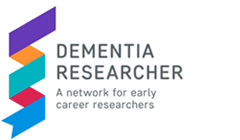
 Print This Post
Print This Post


